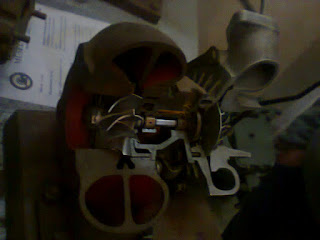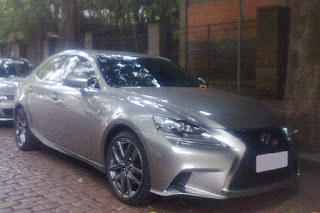It is undeniably quite challenging to make a "flexfuel" car retain some reasonable mileage figures on gasoline while it also features ethanol capability, especially when it's fitted with a random outdated engine such as the one which my mother's former Chevrolet Celta resorted to. Apart from an increase to the compression ratio and switching from throttle-body injection to sequential port-injection, that was roughly the same old Family 1-based introduced to Brazil in local variants of the Opel Corsa B which were rebadged as Chevrolet. Its ancient layout, praised for reliability and ease of maintenance, has some inherent drawbacks when it comes to overall efficiency.
Since 3-cylinder engines didn't have the same appeal in the Brazilian market as they do have now, the engine was basically a downgrade from the 1.2L to 1.0L because of lower taxes, and presumably also the economics of scale since it would still share some key design features with the 1.4L, instead of the 3-cyl 1.0L fitted to its European counterpart. The very same basic engine layout remains in use as the only powerplants available for the Onix, present-day entry-level Chevrolet in Brazil, in both 1.0L and 1.4L featuring flexfuel ability in the domestic market and also on regional export markets even though ethanol didn't really catch up as effectively anywhere else as it used to do in Brazil.
Maybe the competition with compressed natural gas in neighboring countries such as Argentina, Colombia and Bolivia has its effect on the seemingly lack of market opportunities for ethanol, plus the fact that it seems easier to compensate the inefficiencies inherent to the engine design on the fuel trim while resorting to CNG without side-effects while operating on gasoline, but an ancient engine layout also seems discouraging to take "flexfuel" capability so seriously. Despite being easy to work on this engine and even perform makeshift fixes, and most likely that's the reason why it wasn't phased out yet, there are some compromises that a handful of simple improvements can't effectively overcome.
It may sound kinda surprising, but GM has resorted to the bumped-up compression before it started to feature the "flexfuel" ability, at least to the 1.0L version, when local variants of the Opel Corsa C (guess what, rebadged as a Chevy once again) had it as a cheaper way to improve performance while the 4 valve-per-cylinder layout was prevalent among the competition. Since its fuel chambers were in fact kinda small, it seemed easier to overcome the risk of knock simply adjusting the ignition timing on demand. In the end, it led to a rough operation when the mandatory ethanol content on gasoline enforced in Brazil decreased due to sugar prices oscillations leading to a decrease in the ethanol offer for the domestic market. Corn-based ethanol, which could overcome this issue, is a taboo in Brazil...
Sure the initial interest on "flexfuel" capability in American vehicles such as the Chevrolet Lumina APV and the usage of methanol as an option mostly for the fleet market, for which the effects of the fuel availability limitations would've been somewhat more critic, has also led the intereset to a greater parts interchangeability with regular gasoline-only and pulled the plug on an eventual implementation of more advanced features in order to increase the efficiency while operating with alcohol fuels. Even though such conservative approach was not so pointless at all, there were possible ways to achieve similar goals without too much hassle to the maintenance, such as resorting to forced-induction as a way to emulate a variable compression ratio.
Sure a turbocharger could've been pointed out as a technical nightmare back in the day because of the thermal management which becomes somewhat more critical, plus there is a lot more pipes under the hood to limit access to other components, but the possibility of replacing the standard blow-off valve for an adjustable one to provide an over-boosting on demand. Maybe a belt-driven supercharger looks like a simpler option, since it wouldn't require too much mods to the exhaust system, but it requires some more mechanically-intensive mods to reach the same (or eventually superior) level of variation to the dynamic compression. No wonder it took a while for forced-induction to be taken really seriously on "flexfuel" vehicles...
At least in Brazil, the first "turboflex" available was the BMW 320i ActiveFlex, which also resorts to direct injection and therefore doesn't require any specific cold-start aid such as fuel pre-heating or the obsolete auxiliary gasoline tank which used to be available in dedicated-ethanol and earlier "flexfuel" cars in Brazil and decreases the risk of knocks even while resorting to a leaner air/fuel ratio on gasoline under some compression ratio which would otherwise remain more suitable to ethanol only. Turbo and direct injection became also available in smaller models too, such as the Volkswagen Virtus which features the 1.0L TSI 200 engine, alongside a naturally-aspirated 1.6L with port-injection more favorable by commercial operators such as taxi drivers simply because it's still easier to convert to CNG and the fear of turbochargers being prone to some catastrophic failure.
And even for those who fear the maintenance of a turbocharged engine or a direct-injection system, it could seem a good idea to give variable valve timing a chance. Fiat has fitted its Firefly engines with that technology, even though it's mostly aimed to improve performance in models such as the Mobi and the Argo, but it could eventually serve as another option to emulate a variable compression ratio.
Hadn't it been for the 1.0L limit for lower taxes, maybe that approach could be tried with the 1.3L version of that engine series in order to do so while retaining some acceptable performance on gasoline despite the decrease on volumetric efficiency while running a longer intake valve phasing overlapping the compression stroke, in a similar way to what Toyota did with the 8AR-FTS currently fitted to the Lexus IS and NX despite it not featuring "flexfuel" ability on them.
Sure the technical mediocrity has led to the lack of confidence on "flexfuel" vehicles as an approach to improve the marketing perspectives for ethanol, but the advances on engine design now available could overcome that issue. Countries such as Brazil where a higher tax bracket is enforced for bigger engines also have a political challenge in case the interest to take ethanol seriously becomes real, but the cards are on the desk. It's now basically a matter of which configuration to choose, but it's effectively possible to overcome the mediocrity and make "flexfuel" cars really desirable...


















I could not fully understand.
ReplyDeletea - Which are the requirements in a motor for using flexifuel? I understand that flexifuel means a mixture of petrol based gasoline and Ethanol in various proportions
b- how did GM made it in its Corsa/chevy models?
c- What problems do have this solution?
d- Fiat created Multiair for having some kind of variable timing valves. Is that what you refer with the Firefly motor?
e - it is still alive the low tax braket for 1.0 lts motors? I thought it was eliminated.
A) It can use either gasoline/petrol or ethanol, pure or blended in any proportion;
DeleteB) Since it was already fitted with an O² sensor (a.k.a. Lambda probe) the air-fuel ratio was adjusted automatically, but since the combustion chambers were already quite small even a wasted-spark ignition wouldn't really have so many side-effects compared to a more complex one with variable timing;
C) The engine performed well on a higher amount of ethanol, but struggled to keep up some reasonable performance while operating on gasoline, since it had to suppress the incidence of knocks;
D) Exactly, that was what I had in mind when I mentioned VVT, as it could be eventually also adjusted to emulate the Atkinson cycle in a way similar to what is done in the Prius;
E) The lower tax bracket is still alive for 1.0L engines in Brazil, otherwise I guess they would have already vanished here.
you may find interesting this: http://www.macmadigan.com/Public/cylinder_pressure/epa-fev-isaf-no55.pdf
DeleteThose researchers did it adopting a diesel engine with compressor and EGR and spark plug. It is possible to do the same, albeit less effective, using a diesel engine without compressor and EGR, but stepped injection, as Ricardo did